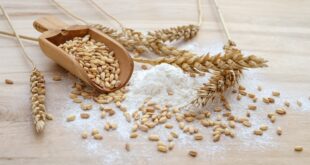Over the past year, I have spent almost half of my time travelling. Being away from home means meeting new people, gaining new perspectives and stepping outside your comfort zone. I think this is something that most of us academics lack.
Whenever I meet someone new and they find out that I am an agricultural economist, the first question they ask is about food inflation. Then, topics like marketing margins for fresh fruits and vegetables (more specifically, why something that costs 1 TL at the farm costs 20 TL at the market), the food supply chain and food safety form the depth of our conversations under the same heading.
In fact, the root of most of these issues lies in food distribution logistics… The logistics of distributing food products that retain their freshness from harvest to consumption are more complex and sensitive than logistics in other sectors.
Food distribution logistics can be defined as the process of transporting a specific quantity and quality of food to final sales points within a certain timeframe.
“Everything is a distribution problem”
A few days ago, when I came across Joan Westenberg’s article titled, “Everything is a Distribution Problem” on Medium, I thought I should write about this topic. Paul Graham’s article titled “Distribution” is also worth reading.
Westenberg’s article includes the following striking statements:
-Thomas Malthus stated that throughout history, progress has been achieved not so much by finding good ideas, but by spreading them,
-What undermined Malthus’s prediction of scarcity was not production but distribution networks,
-Resources such as food, medicine and information are actually available in sufficient quantities, but they cannot reach the right place at the right time; the problem is not scarcity but access,
-Even successful products can fail if they do not reach the right people, so it is not enough to simply create a ‘good product’; distribution must also be considered,
-And finally, Westenberg argues that real progress often comes not from the laboratory but from a distribution warehouse.
As Westenberg states, in the agricultural economy, every problem has a distribution problem at its core.
The fragile chain of food distribution
Inefficient food distribution logistics;
- Increased marketing costs,
- Increased product losses,
- Increased energy costs,
- Decreased product quality,
- Inability to deliver at the required time and place,
- Loss of producer income,
- Rising food inflation,
- Disruption of supply and demand balance,
- Excessive price fluctuations,
- Inability to implement effective production planning,
- Threat to food safety and food security,
- Weakening of the sustainability of agricultural production.
What can be done?
- In addition to agricultural production planning, food distribution should also be planned.
- Agricultural products should be digitally tracked alongside harvests.
- The extent of loss and waste at each stage of the distribution network should be determined.
- Logistics infrastructure, particularly the cold chain, should be established.
- Alternative channels (rail, sea, etc.) should be considered to reduce logistics costs.
- Food consumption should primarily be based on production regions.
- Agricultural organisations should be active not only in production but also in agricultural marketing.
In summary, a food distribution logistics system must be urgently designed and established to ensure that products do not remain in the fields, that a significant portion of them does not get lost in the distribution network and that consumers are not only fed but also adequately nourished.
A system where the logistics chain consumes the entire marketing margin and fails to satisfy both producers and consumers is unsustainable. The issue is not food scarcity but access to food. Ensuring self-sufficiency in production is as important as ensuring that the public can find and afford sufficient food.

By Professor Dr. Aykut Gül,
Agricultural Economist,
Lecturer at Çukurova University
Source: www.dunya.com
 THE GLOBAL WINDOW OF TURKISH FOOD AND AGRICULTURE The Global Window of Turkish Food and Agriculture Sector
THE GLOBAL WINDOW OF TURKISH FOOD AND AGRICULTURE The Global Window of Turkish Food and Agriculture Sector








